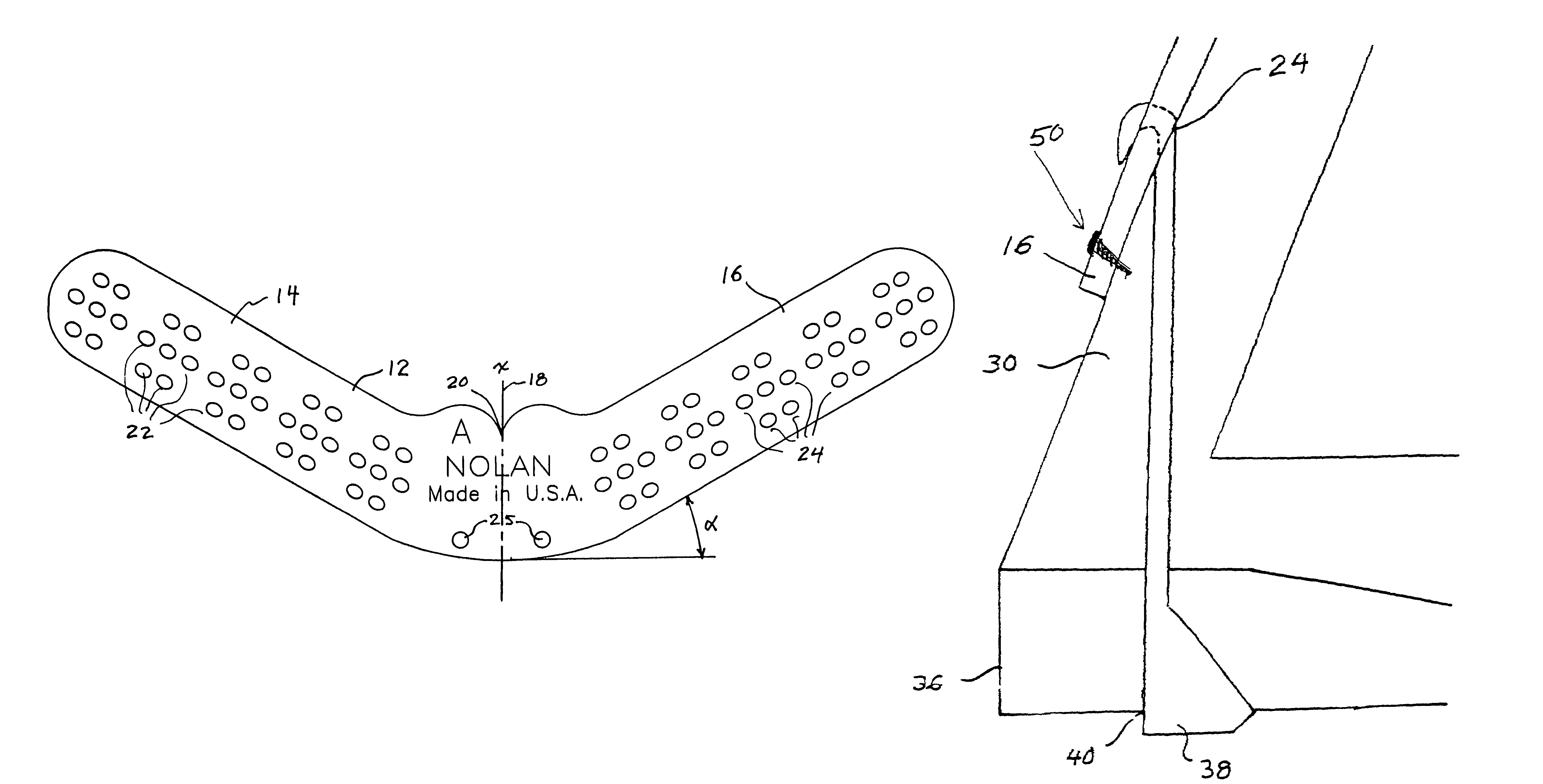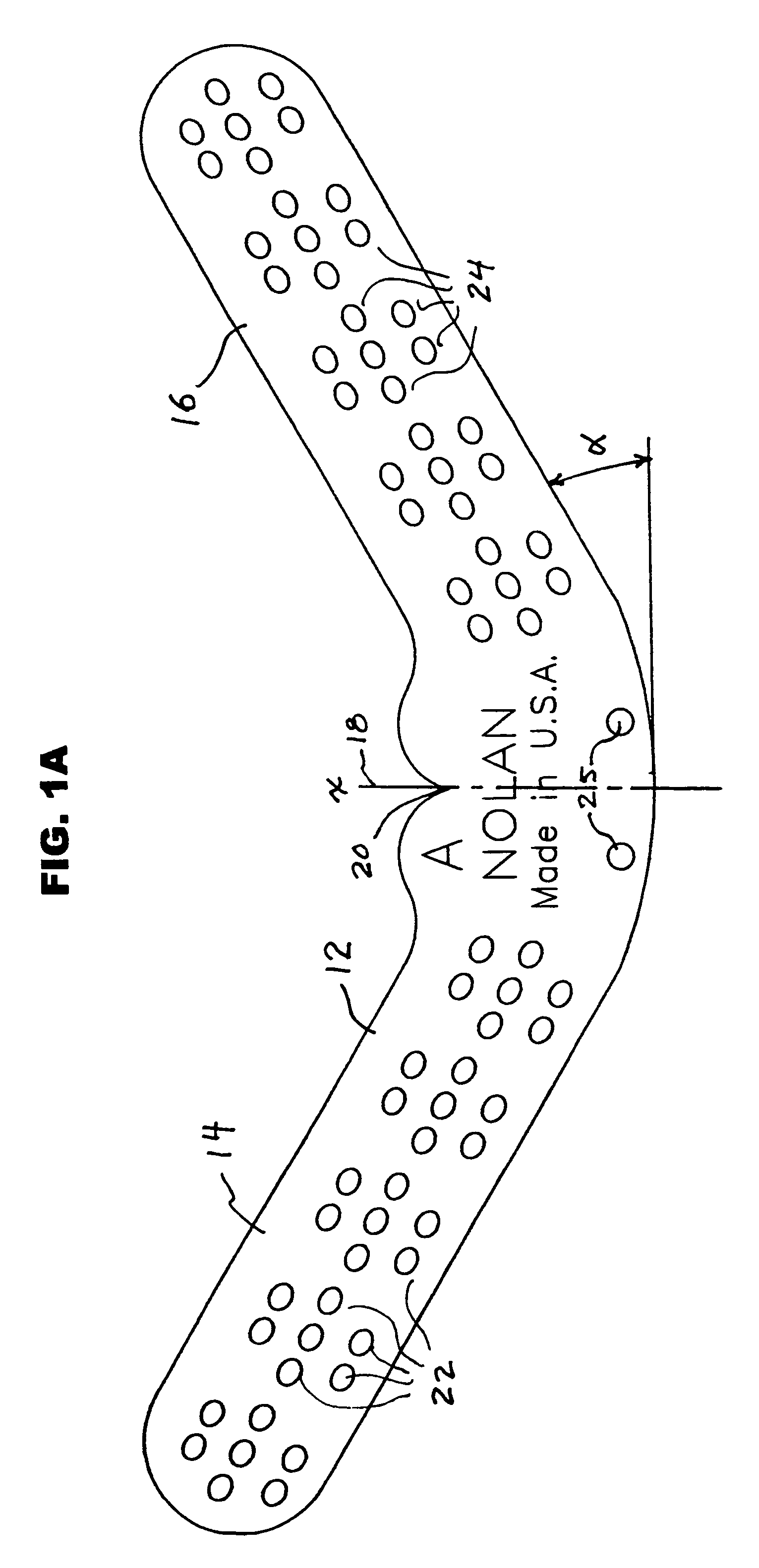Method and apparatus for treating hoof problems
a hoof problem and hoof technology, applied in the field of hoof problems, can solve problems such as the inability to stand on the horse, and achieve the effect of effective treatmen
- Summary
- Abstract
- Description
- Claims
- Application Information
AI Technical Summary
Benefits of technology
Problems solved by technology
Method used
Image
Examples
experiment 1
Purpose:
[0067]To determine if the application of a hoof plate for an extended period would damage a horse's hooves.[0068]Location: Lubbock, Tex.[0069]Timeline:
[0070]Sep. 10, 2003: 2 horses were trimmed for shoeing, and transported to a veterinarian for examining, radiographing and measurement by a veterinarian.
[0071]Sep. 11, 2003: Both horses were returned to test location and shod using hoof plates by a farrier, and turned out in a 150′×150′ paddock, with free-choice grass, hat, salt and minerals, and supplemented with feed as needed. All hoof plates were inspected on a weekly basis by the onsite research manager.
[0072]Jan. 22, 2004: Plates and shoes were removed.
[0073]Jan. 23, 2004: Horses were transported to veterinarian and examined, radiographed and measured.
Summary of Observations:
[0074]Hoof plates were on horses for 4 months, 10 days. At 14 weeks, both horses showed signs of being slightly unsound. Signs resolved in three days without intervention; horses remained sound for r...
experiment 2
[0076]After Experiment 1, a less rigorous experiment was made on two additional horses. Hoof plates were placed on two additional horses. No measurements or radiographs were taken, but photographs were taken. Horse #1 had underslung heels and splayed toes on all hooves. Horse #2 had superficial cracks in both front hooves, running from the coronary band to the toe. Both horses were fitted with hoof plates and shod for two 8-week cycles. At the end, Horse #1 hooves showed a return to normal growth rings, elimination of concave dish in hooves, and heels were less undershot. Horse #2 hoof cracks were stopped and did not return.
[0077]FIGS. 7, 8 and 9 show various views of a hoof of one of the horses participating in the Experiments. These illustrate a hoof plate secured to a hoof by screws 50 and as an anchor for the clinched ends of shoeing nails 40, all of which are inserted through the oval apertures 22, 24. The screws were screwed through the apertures into the hoof itself, thereby ...
PUM
 Login to View More
Login to View More Abstract
Description
Claims
Application Information
 Login to View More
Login to View More - R&D
- Intellectual Property
- Life Sciences
- Materials
- Tech Scout
- Unparalleled Data Quality
- Higher Quality Content
- 60% Fewer Hallucinations
Browse by: Latest US Patents, China's latest patents, Technical Efficacy Thesaurus, Application Domain, Technology Topic, Popular Technical Reports.
© 2025 PatSnap. All rights reserved.Legal|Privacy policy|Modern Slavery Act Transparency Statement|Sitemap|About US| Contact US: help@patsnap.com



